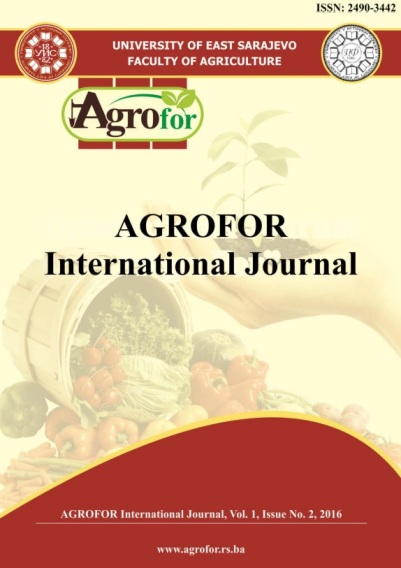THE USE OF UREASE INHIBITOR FERTILIZERS (AGROTAIN) AND THEIR EFFECT ON CEREAL CROPS AND COTTON YIELD
DOI:
https://doi.org/10.7251/AGRENG1602077GAbstract
Many commercial compounds exist that promise the increasing efficiency of urea
fertilizers by inhibiting urease activity in soils. Such a compound gaining in
commercial importance in the last decades is N-(n-butyl) thiophosphoric triamide,
broadly known with its registered trade name of “Agrotain”. In this paper, the
effect of nitrogen fertilizer dressings using Agrotain versus conventional (urea)
fertilizers was studied under field conditions. In particular, the effect of three
different nitrogen dressings using conventional N-fertilizers and Agrotain was
investigated on the growth and final yield of (rainfed) durum wheat, and (irrigated)
maize and cotton, grown on a fertile clay loamy soil in Velestino (Thessaly plain)
area in central Greece in the year 2015. It was demonstrated that all three crops
fertilized Agrotain obtained greater chlorophyll contents and reached significantly
higher biomass and grain yields comparing to the crops receiving traditional
nitrogen fertilization, obviously due to the more effective nitrogen release and
uptake by the crops.Therefore, application of urease inhibitor fertilizers, such as
Agrotain, might reduce nitrogen application dressings, reduce N-losses and
nitrification, and their introduction to existing crop rotations is highly advisable.

